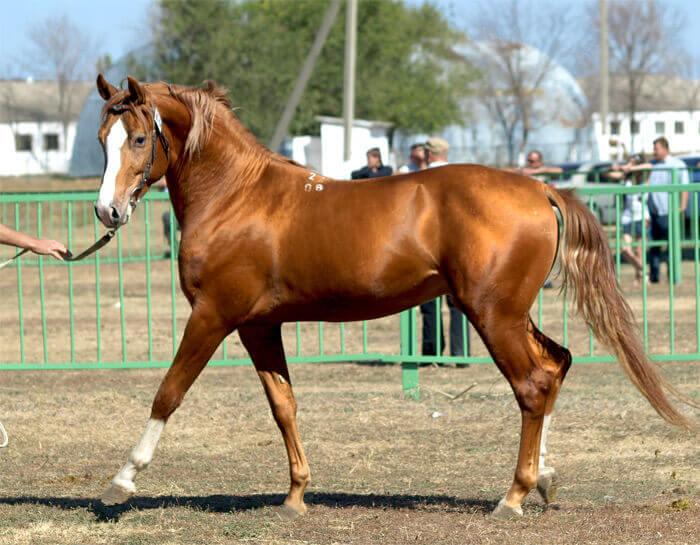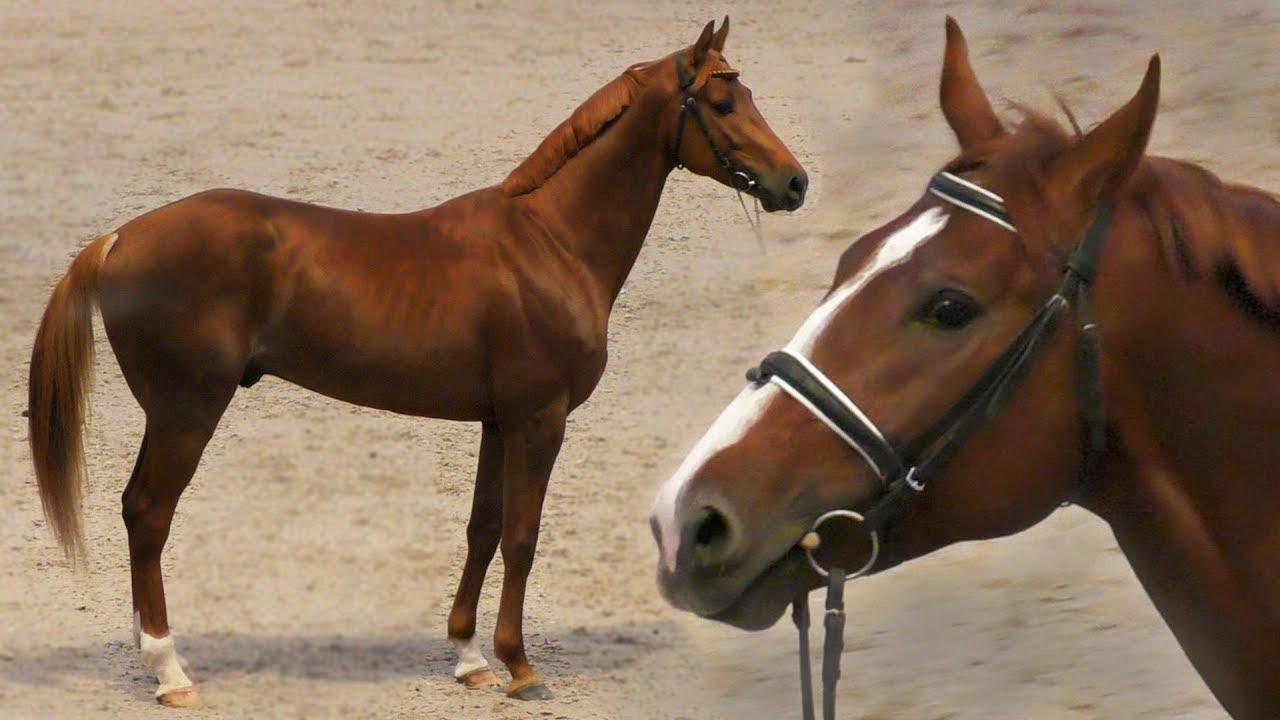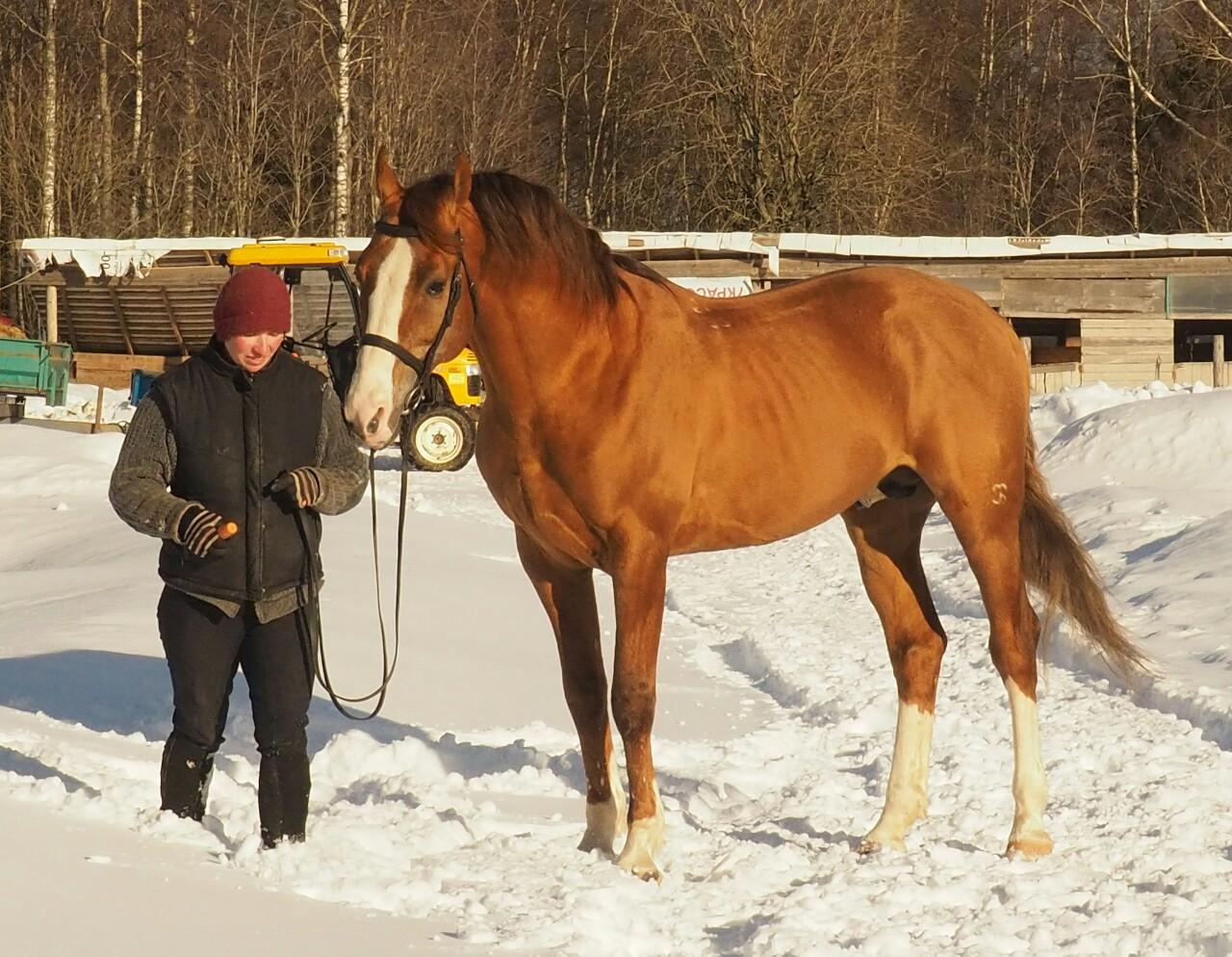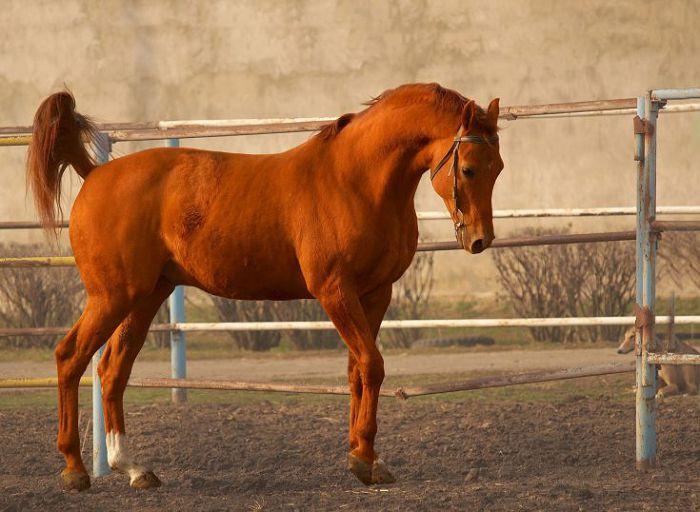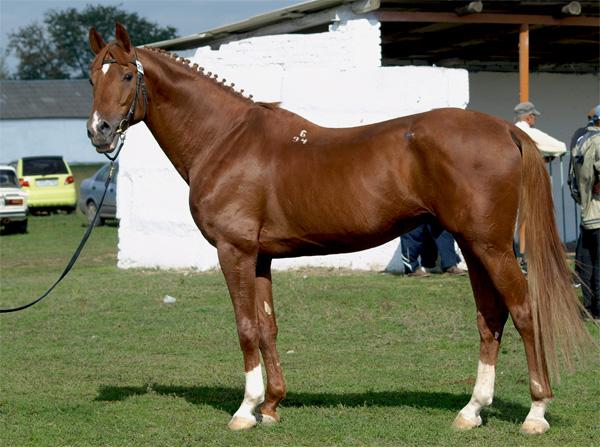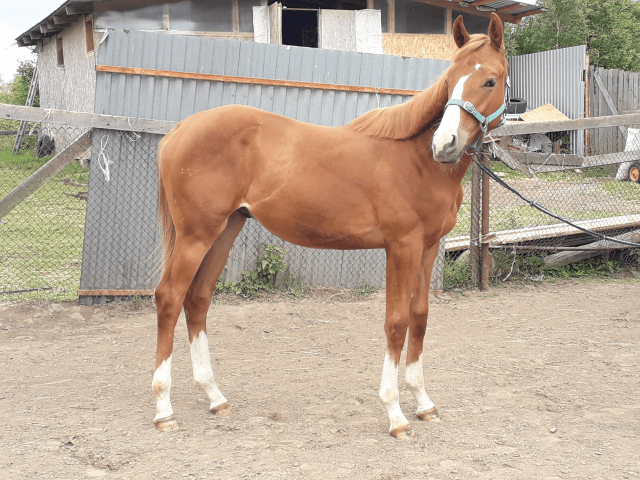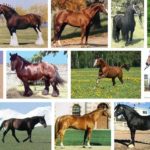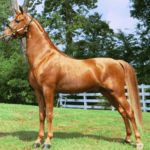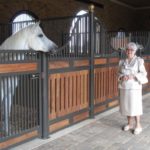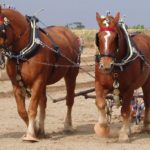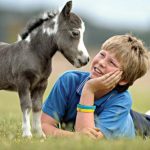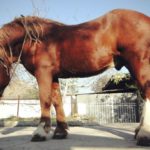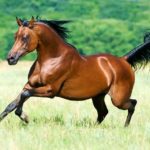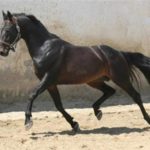Horses of the Budennovsky breed were bred in the USSR for the cavalry units of the Soviet army. The mechanization of military units led to the abolition of cavalry as a branch of the military. Budyonnovsk residents remained in demand for equestrian competitions. The horses harmoniously combine the beauty of their exterior, power and speed. In addition to these qualities are endurance and unpretentiousness in maintenance.
Origin story
Initiator of withdrawal horse breeds for the cavalry there was S. M. Budyonny. At the end of the civil war, stud farms in the Kuban were given every possible support to create a stock of horses for breeding.
The directors of the stud farms were the commanders of cavalry units who were well aware of the requirements for horses for military needs. 70 stallions of the English riding breed were delivered to 150 mares of the Don breed. A special role in the formation of the characteristics of the Budennovsky breed was played by the stallions Simpatyaga, Kokas, Inferno, as well as Rubilnik.
The following stud farms continue to breed Budennovsk horses:
- named after S. M. Budyonny;
- named after the First Cavalry Army;
- "Yulovsky";
- "Virgin Land";
- "Donskoy"
- in Kalmykia;
- Krasnodar;
- Stavropol region;
- Primorye.
Horses, with general breed qualities, have factory characteristics:
- the horses from the First Cavalry are recognized by their bay color, large head, and angularity;
- stud farm named after Budyonny is recognized by his muscular, broad-bodied, red-golden horses;
- Yulovskie horses are more graceful, golden in color.
The cultural herd breeding method in combination with physical activity made it possible to quickly form breeding characteristics. Official recognition of the breed occurred in 1948. From the Donetsk people, the Budyonnovsky team adopted their style, unpretentiousness and endurance. English horses conveyed the exterior and agility.
In the 60s, the demand for riding and draft horses for army needs fell sharply due to the expansion of the automobile fleet and the abolition of cavalry as a branch of the military. The Budyonnovsky horse has been preserved and is in demand as a sporting horse, for organizing tourism, hunting, horseback riding, and hippotherapy.
Description of the Budennovsky breed
The Budennovskaya breed, despite the difficulties of financing in the 90s, has retained its breeding characteristics. This is a large-boned, tall horse, bay or red in color with a golden undercoat. A playful, hardy animal with good coordination.
Exterior
Budennovsky horses were bred for riding, which determined their appearance. The height of stallions can reach 178 centimeters, mares - 170 centimeters. The average size of the breed is 165 centimeters. The muscular body has a straight back, a wide and deep chest, a powerful croup, and developed withers. The smoothly curved neck merges into a long nape. The head is dry, broad-browed, with a straight bridge of the nose, small, expressive eyes.
The legs are slender, with well-developed muscles, strong joints and tendons. Color – shades of red with a golden tint.
Character
Budennovsky horses often have a wayward character. By nature they are impressionable and affectionate to the owner, and painfully tolerate a change of owner. In such cases, they may show stubbornness, disobedience, and kick. Such individuals are isolated from other horses so that they do not affect the controllability of the herd.
Intrabreed types
In the Budennovskaya breed there are 3 intra-breed types:
- characteristic;
- Oriental;
- massive.
The characteristic type combines the main characteristics of the ancestors:
- height;
- massiveness;
- agility;
- performance.
In the eastern type, genes from the Donetsk people predominate. These are smaller horses of an elegant color. The massive type is inferior to the previous two in terms of exterior and agility, and surpasses them in body size. There are crosses between eastern massive and eastern characteristic.
Productive qualities
Budennovsky mares are distinguished by their high productivity, which is explained by their excellent health and longevity.The peculiarity of the horse is that it produces offspring only when kept in a herd. Foals appear in late autumn. Three herds are formed from the young stock: stallions, fillies and a group of the best. They are intended to produce offspring and improve the breed.
Advantages and disadvantages
A horse bred for military purposes has advantages that are rarely found in other breeds. This is a brave, intelligent, patient animal. The horse becomes attached to the owner and trusts him completely, flawlessly fulfilling the tasks assigned to him. As a result of selection, the horse is resistant to prolonged nervous and physical stress.
She has the ability to sprint, run for a long time, and jumps well. Natural grace and beautiful exterior made her irresistible in dressage competitions. At the same time, Budennovskaya do not require special care in care and feeding. Natural immunity protects against colds. The disadvantages of the breed include the occasional quickness and stubbornness shown towards unfamiliar people.
Keeping at home
The Budennovsky breed is not as demanding in terms of maintenance and care as the Arabs and Akhal-Teke. Originally intended for cavalry units, it was hardened on long pastures and raised in herds. When keeping a horse individually, it is necessary to take into account the breeding characteristics.
Stable
Budennovsky horses do not tolerate stuffiness and high air temperatures. Painful bites of autumn flies, gadflies, and horse flies make animals nervous. In summer, the stable must have good ventilation to create comfortable living conditions.
In the cold season, dampness and drafts should be avoided in the room where horses are kept.The best temperature range is from 7 to 10 degrees Celsius.
Care
The horses are washed once a week. During training and after competitions, the procedure is carried out more often. The wool is first cleaned with rubber scrapers and hair brushes. The mane and tail are washed with shampoo and combed with a wooden comb. The horse must enjoy the water procedure, otherwise he may hit with his hoof.
Horse hooves are cleaned with a hook, removing stuck stones and dirt. Once a month, remove dead bone tissue and rub in emollients.
Cleaning the barn
Sawdust, straw or peat are used as bedding. Complete replacement is carried out in spring and autumn. The rest of the time, add 5-10 centimeters of bedding.
Feeding and watering
The diet of Budyonnovsk residents includes hay and fresh grass, corn and oats, vegetables and fruits. Horses love to be treated to a piece of sugar. During training, the proportion of forage is increased and vitamin and mineral supplements are introduced. Drinking water should be fresh, at a temperature of 15-17 degrees. Water the horses before feeding. The daily water requirement is 70 liters per head.
Disease Prevention
The horse is examined daily for timely detection of cuts, cracks in the hooves, and tendon sprains. Once or twice a year, the horse is shown to the dentist to prevent tooth decay. Horses must be examined by a veterinarian annually. Vaccination is carried out according to age and plan.
Nuances of breeding
The Budennovsky breed of horses should be raised in a herd or group of 8-10 horses. This feature allows you to reveal the character and temperament of the horse. With a limited pasture size, horses with an uncooperative, obstinate character interfere with the rest of the herd or group's grazing. Such animals are removed from the herd.Requirements for the character of a herd mare:
- agreeableness;
- equilibrium;
- patience;
- intelligence;
- speed reaction.
After weaning, foals and fillies graze separately. The most valuable stallions form a cultural group from which future sires and individuals will be selected to compete. The foals are kept in stalls in pairs, accustomed to a person, haltered, and given a nickname.
Starting from the age of 2, horses are tested in races at the hippodrome, teaching them to withstand great physical stress.
Price
Horses of the Budennovsky breed can be purchased at stud farms and from private individuals. Stud farms offer young animals aged from 1.5 to 2 years at a price of 100 thousand and 150 thousand rubles per head, respectively. Private owners offer horses for sale that are 6-8 years old. These are either trained stallions and geldings ready for equestrian performances, or mares for reproduction. The cost depends on the pedigree and results of performances in competitions. The price varies between 1.5 million rubles.
Where is the breed used today?
The Budennovskaya breed is a sporting breed. The universal qualities of horses allow them to be used in all competitive disciplines:
- show jumping;
- horse racing;
- triathlon;
- dressage
Representatives of the breed successfully compete for prizes in these types of equestrian sports. Famous foreign athletes such as N. Garson, L. Berbaum, Y. Zusman performed at them. Horses are used to treat children with cerebral palsy (hippotherapy), in hunting, in equestrian tourism, and in amateur horse riding.

